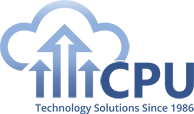When it comes to running a successful business, the last thing an owner or manager wants to think about is a disaster that could cause their business to go bankrupt. While there are many things you can do to minimize the potential fallout from any disaster, the most important is implementing a comprehensive disaster recovery plan that covers more than just data backup. If you are struggling to figure out what to do, this article may help.
Here are five tips to help ensure that your business is fully ready for the next disaster.
1. Backup everything
While it can be tempting to only backup the most important data and programs, it can be a chore to identify what is deemed to be important. Who knows, a file that is non-essential today may become essential in the future. If it is lost due to a disaster, this could prove to be a problem.
It would be a good idea to look for a backup solution that covers all data and programs. But, having a full backup solution isn’t enough, you also need to ensure that recovery is easy and can be implemented quickly.
2. Look into tiered recovery
Establishing a tiered recovery method means identifying the value and importance of existing systems and utilizing a recovery method that meets needs. It would be a good idea to identify mission critical systems and adopt a recovery method that can have these systems up and running as quickly as possible. From there you can tier different systems and match a recovery method. For example, archived files are likely not needed right away, so they can be recovered at a later date, using a slower recovery method.
3. Keep copies of all keys and licenses
With the amount of software and programs businesses use on a daily basis growing, it would be a good idea to keep copies of the activation keys (the string of digits and letters you enter to activate the full version of software) and purchased licenses.
While many of these are now distributed electronically through email, there are still software developers that distribute keys by mail or with the physical install CDs. If you lose the codes in a fire, you will be out of luck and have to purchase the software again. This is an extra charge you likely don’t want.
4. Pick the right recovery locations
The best recovery plans offer numerous backup solutions which are hosted in different locations. A good provider knows this and will utilize data storage centers as far apart as possible. If you choose to backup your own data, it would not be a good idea to keep the backups in the office.
Similarly, if you are preparing for a big disaster, you likely have physical locations that you can move to if your main business location is damaged or destroyed. Optimal plans will have more than one location identified, and have them as far apart as possible. This will minimize the chances of losing full operations and increase your business’s ability to bounce back quicker.
5. Match your recovery plan to your business
There are so many different backup and recovery options that it can be tough to pick one. The best course of action is to look at your systems and how they work. If you operate strictly offline, a cloud based backup solution likely isn’t your best bet. Or, if you operate fully in the cloud, a physical tape or hard disk backup may not be optimal.
If you are looking to beef up, or establish a disaster recovery plan, try working with an IT partner like us, who can help you find the optimal solution that can meet your needs and budget.
Published on 15th May 2013 by Jeanne DeWitt.


